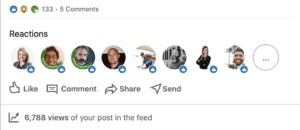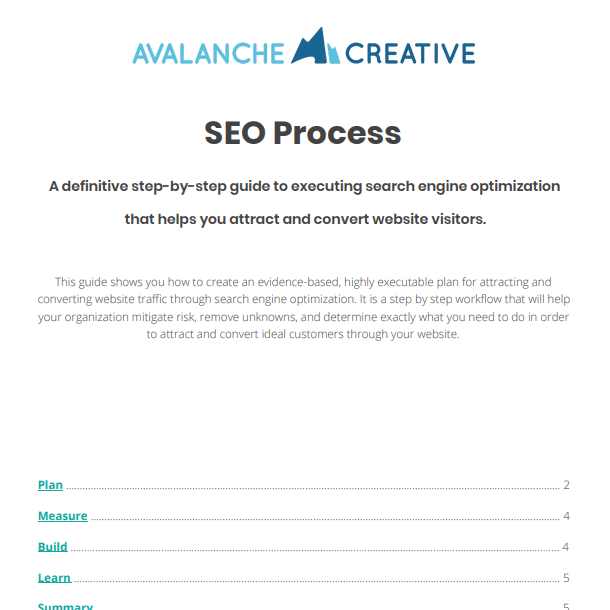Content Gaps: What They Are and How to Find Them
Category: Search Engine Optimization | Tags: SEO, avalanche email
Learn More and Subscribe to The Avalanche Weekly Email
Last week I shared an “SEO Strategy Quick Tip” on LinkedIn.
It got a lot of attention:
Since people on LinkedIn enjoyed this post, I figured you might as well.
So, here it is (with a little extra detail, because I think you’re awesome).
—
Look for content gaps.
- Find a high performing page that brings in quality traffic.
- Look at the list of keywords that page ranks for (use SEMrush)
- See if there are any keywords where that page ranks within the first 5 positions but doesn’t have any mention of that keyword on the page (yes, it happens).
Example:
- mindful.org has a guide on “how to meditate”
- they rank # 1 for the keyword “how to meditate at home“
- the page that ranks does not include the keyword “home”
This is a content gap.
Someone cares specifically to learn how to meditate at home. There are loads of helpful information that could be elaborated on the specificity of home meditation.
Think about why someone might be motivated to find at home meditation help:
- Home distractions: kids, dog, cleaning, etc. These are things that someone would have to manage at home in order to meditate well.
- They are spending more time at home and need to find a way to create time and space for their mental health.
- They want to know what makes a good at-home meditation environment.
You get the idea.
Sure, the reality is, to some extent, meditation is meditation. But, that’s a rather insensitive, not-personalized way of thinking.
If you want to help your potential customer and create an opportunity for sales, you need to care more.
Mindful.org could hold its dominance of the topic with more relevant content OR a competitor could come to steal away that traffic by focusing more on home meditation.
The winner is going to be the one who cares more.
How did I find this example!?
Identifying content gaps is a part of putting together a great content template. Learn more about those here.
Keep in mind, you’ve got content gaps, as well. Everybody does and that’s why SEO is never finished. If your competitors find your gaps before you find theirs, they can steal away your traffic.
Share this article:
The Avalanche Email: Fun. Simple. Educational. No Selling.
Learn Result-focused SEO & Content
Join over 2,272+ others who get one email every Wednesday with simple instructions on how to get more website traffic and leads through SEO and content marketing. (Learn more about the email)
Keep Learning
How To Show Up in Gemini (And Win More Local Jobs)
Show up in Gemini when homeowners search for landscaping services. Build the right signals on Google and your website to win more qualified local jobs.
How to Run Google Ads for Landscapers: A Complete Guide
Learn how to set up Google Ads for landscapers, attract qualified leads, and win more local jobs with this step-by-step guide.
🏔️ Watering > Planting New Seeds
Your next marketing win may already be on your site. Learn how to optimize existing pages for better rankings, traffic, and results.
The Recipe vs. The Meal
Your customers buy the experience, not the product. Discover a simple way to shift your message from ingredients to the full meal.
🏔️ Hook, Line, and Sinker 🎣
Use this fishing framework to turn your posts into stories that capture attention, create tension, and inspire action from your audience.
🏔️ Avoid Everything That Doesn’t Move You Forward
Stop chasing shiny tools and refocus on what moves your marketing toward the end zone. Simple steps to cut noise and make steady progress.





